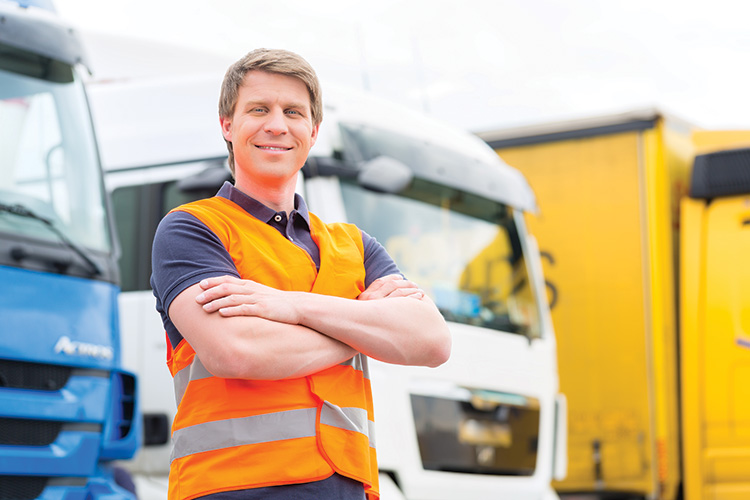Technology not only helps avoid accidents, but also assists in preventing future incidents and reaching important goals for continuous improvement.
By Colin Grant
The number of fatalities in solid waste collection is rapidly decreasing, and the profession dropped from the sixth to the seventh most deadly profession in 2021 in the U.S., according to data released last monthby the U.S. Department of Labor’s Bureau of Labor Statistics.
In Canada, the Canadian Union of Public Employees (CUPE) calls waste collection “one of the most hazardous jobs,” with injuries affecting about 35 percent of garbage collectors each year, according to a report from the National Library of Medicine.
Between 2020 and 2021, solid waste collection fatalities dropped 5 percent in the States. A great start, but one worker death will always be too many. Incidents related to backing and speed, as well as rear-end collisions, remain among the most common causes of injury.
Despite an increased focus on fleet safety in the industry, there is still much work to do to make waste and recycling collection safer for drivers, their helpers, and the communities they serve.

efficient and productive. Photo courtesy of Routeware.
How Technology Mitigates Risk
To make waste collection safer for the workforce and the community, haulers must identify and mitigate risks before they cause an accident. Smart technology for waste and recycling can help by providing several controls that eliminate or replace hazards by changing the way people work.
#1: Reduce In-Cab Distractions
Truck automation makes driving safer by keeping drivers’ focus where it should be. With onboard computers, sensors, and GPS, drivers can record information automatically or with the touch of a button.
#2: Stop Driver Cell Phone Use
Many times, when drivers use cell phones behind the wheel, it indicates an issue with workflow and tools rather than training. When drivers do not have the appropriate technology to connect with back-office staff, capture images or video to make their case, or communicate effectively with other drivers, they may resort to cell phone use when it is not safe.
#3: Improve Driver Visibility
When drivers cannot see what is behind them, backing up is dangerous. Cameras that provide 360-degree visibility around collection vehicles keep everyone safer and prevent accidents—not to mention that they provide irrefutable evidence of what is happening at the curb so haulers can push back on go-backs, charge for extras, and enforce the rules of their programs.
#4: Coach Safer Driving Habits
With personalized performance data that includes information about speed events and hard braking, supervisors can coach drivers on the safety issues that matter, reducing the likelihood of an accident.
#5: Design Safer Routes
With route optimization software created specifically for waste and recycling collection, teams can design safer routes that can be shared to onboard computers to systemize best practices. True route optimization is more than just route sequencing. It allows supervisors to use the experience and expertise of their drivers to build routes that work in real life, not just in theory. An added safety benefit: Organizations that optimize routes generally reduce time spent on the road by about one quarter—and less time on the road means less risk overall.
#6: Cut Speeding
Supervisors need to know when drivers are speeding so they can provide accountability—from coaching and correction to discipline, as needed. They also need to hold up their end of the bargain with balanced, well-designed routes that drivers can safely and feasibly complete in the amount of time they have. The right technology can support both functions equally.
#7: Reduce Vehicle Faults
Technology can help make sure drivers have time and are made accountable for important vehicle inspections before and after running routes. Inspections are critical for preventing accidents and delays, and, ultimately, for providing timely collection and customer service.
#8: Remove Dangerous Items
The improper disposal of items such as lithium-ion batteries, medical sharps, and household chemicals are another source of injury for collection workers. Digital tools for waste and recycling education simplify the process of teaching people how to dispose of potentially hazardous materials and help keep workers safe.
#9: Cut Down on Radio Chatter
Communication among staff members inside and outside the truck, as well as among drivers, is key for keeping everyone safe. Smart truck features like onboard computers and cameras with video and photo capabilities, coupled with digital routes, streamline communication between drivers and back-office staff. No more ongoing radio chatter, no more calls from driver cell phones. Instead, everyone has the information they need without unhelpful distractions getting in the way.
The Future of Collection Safety
Waste and recycling technologies are nothing new, but they are becoming more important as safety issues come to the forefront, especially as the industry grapples with attracting and retaining top talent.
Forward-looking haulers know they must identify the principal causes of accidents and incidents and address them, and successful employers are focusing on the tools and technologies their employees need for safety’s sake.
Tech not only helps avoid accidents: When they do occur, it likewise helps haulers investigate more thoroughly, prevent future incidents, and reach important goals for continuous
improvement. | WA
Colin Grant is Director of Onboard Computers and Hardware Product for Routeware, a leading provider of smart technology for waste and recycling, including onboard computers, integrated video, route optimization, digital engagement, online commerce and enterprise management. Colin can be reached at [email protected]
